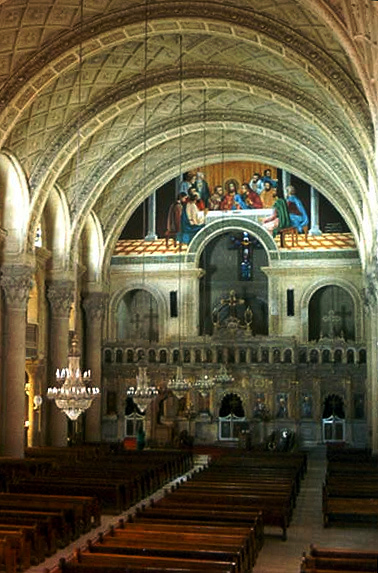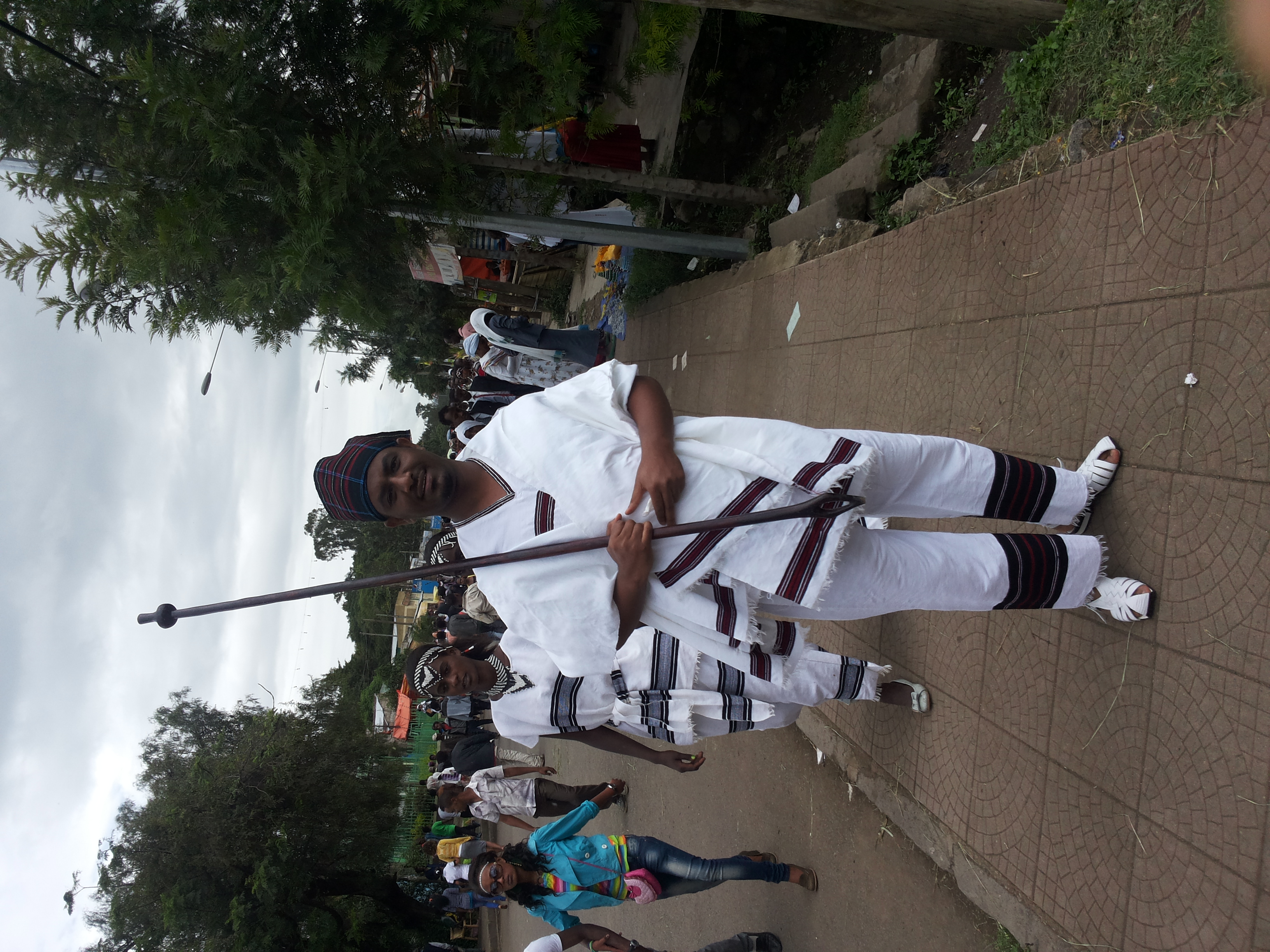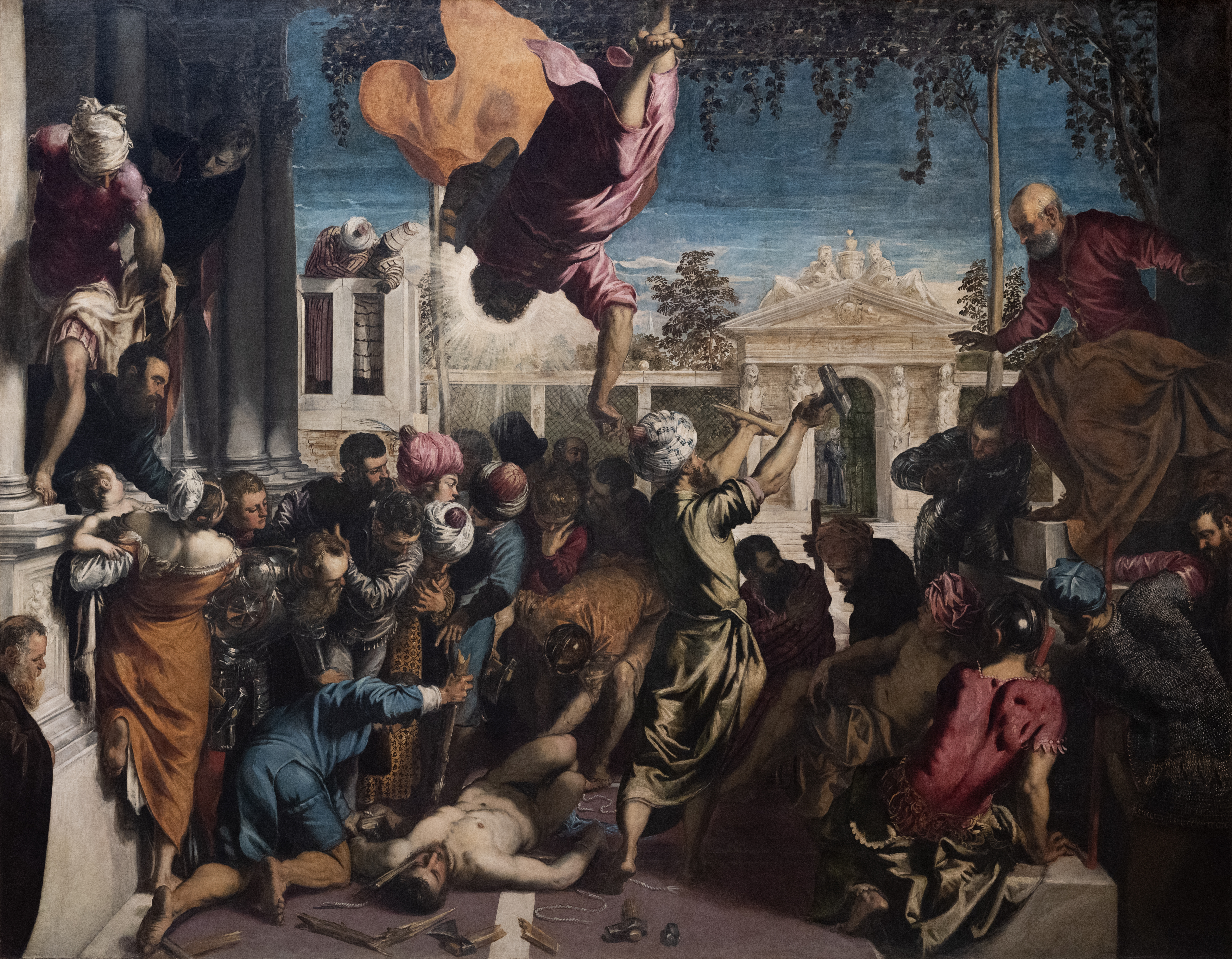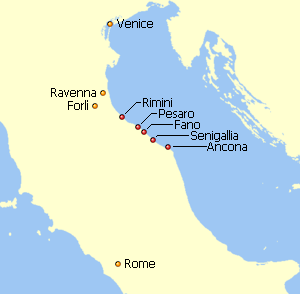|
Anianus Of Alexandria
Pope Anianus (Greek: Ανιανός, transliterated: Anianós) was the 2nd Patriarch of Alexandria. He was ordained by Saint Mark the Evangelist, and was also the first convert Mark won to Christianity in the region.Atiya, Aziz S.. ''The Coptic Encyclopedia''. New York: Macmillan Publishing Company, 1991. . Connection with Saint Mark As St. Mark was entering Rakotis, a suburb of Alexandria, after his trip from Cyrene to the Pentapolis, the strap of his sandal fell off. He found a cobbler, St. Anianus, to repair it. While he was working on the sandal, the awl slipped in Anianus' hand, piercing it. Anianus cried '"Heis ho Theos" ("God is one") in response to the pain. Mark took the opportunity to say the Gospel of Christianity to him, at the same time reportedly miraculously healing Anianus of his wound. How it was that Anianus was a monotheist in Alexandria is a matter of conjecture. Some have suggested that he was himself a Jew, or perhaps a pagan native who had come under t ... [...More Info...] [...Related Items...] OR: [Wikipedia] [Google] [Baidu] |
Saint Mark's Coptic Orthodox Cathedral (Alexandria)
Saint Mark's Coptic Orthodox Cathedral is a Coptic church in Alexandria, Egypt. It is the historical seat of the Pope of Alexandria, the head of the Coptic Orthodox Church. Believed to stand on the site of a church founded in AD 42 by Mark the Evangelist, in AD 311 a chapel was recorded here, containing bodies said to be of Mark and his successors. Enlarged in the days of Pope Achillas, the church was ruined in 641 when the Arabs invaded Egypt, but was rebuilt in 680 by Pope John III of Alexandria. In 828, most of the body of Saint Mark was stolen and removed to Venice, with only the head remaining in Alexandria. The church was destroyed again in 1219, during the crusades, then rebuilt again. It was pulled down during the French invasion of Alexandria in 1798, then rebuilt and reopened in 1819 by Pope Peter VII of Alexandria and restored in the 1870s. Between 1950 and 1952, the church was again pulled down, apart from its two bell towers, and replaced by a larger buildi ... [...More Info...] [...Related Items...] OR: [Wikipedia] [Google] [Baidu] |
Pagan
Paganism (, later 'civilian') is a term first used in the fourth century by early Christians for people in the Roman Empire who practiced polytheism, or ethnic religions other than Christianity, Judaism, and Samaritanism. In the time of the Roman Empire, individuals fell into the pagan class either because they were increasingly rural and provincial relative to the Christian population, or because they were not '' milites Christi'' (soldiers of Christ).J. J. O'Donnell (1977)''Paganus'': Evolution and Use, ''Classical Folia'', 31: 163–69. Alternative terms used in Christian texts were '' hellene'', '' gentile'', and '' heathen''. Ritual sacrifice was an integral part of ancient Greco-Roman religion and was regarded as an indication of whether a person was pagan or Christian. Paganism has broadly connoted the "religion of the peasantry". During and after the Middle Ages, the term ''paganism'' was applied to any non-Christian religion, and the term presumed a belief in f ... [...More Info...] [...Related Items...] OR: [Wikipedia] [Google] [Baidu] |
Monotheism
Monotheism is the belief that one God is the only, or at least the dominant deity.F. L. Cross, Cross, F.L.; Livingstone, E.A., eds. (1974). "Monotheism". The Oxford Dictionary of the Christian Church (2 ed.). Oxford: Oxford University Press. A distinction may be made between exclusive monotheism, in which the one God is a singular existence, and both inclusive and pluriform monotheism, in which multiple gods or godly forms are recognized, but each are postulated as extensions of the same God. Monotheism is distinguished from henotheism, a religious system in which the believer worships one god without denying that others may worship different gods with equal validity, and monolatry, monolatrism, the recognition of the existence of many gods but with the consistent worship of only one deity. The term ''monolatry'' was perhaps first used by Julius Wellhausen. Monotheism characterizes the traditions of Abrahamic religions, Abrahamic religions such as Judaism, Samaritanism, Christi ... [...More Info...] [...Related Items...] OR: [Wikipedia] [Google] [Baidu] |
Miracle
A miracle is an event that is inexplicable by natural or scientific lawsOne dictionary define"Miracle"as: "A surprising and welcome event that is not explicable by natural or scientific laws and is therefore considered to be the work of a divine agency." and accordingly gets attributed to some supernatural or praeternatural cause. Various religions often attribute a phenomenon characterized as miraculous to the actions of a supernatural being, (especially) a deity, a miracle worker, a saint, or a religious leader. Informally, English-speakers often use the word ''miracle'' to characterise any beneficial event that is statistically unlikely but not contrary to the laws of nature, such as surviving a natural disaster, or simply a "wonderful" occurrence, regardless of likelihood (e.g. "the miracle of childbirth"). Some coincidences may be seen as miracles. A true miracle would, by definition, be a non-natural phenomenon, leading many writers to dismiss miracles as physically i ... [...More Info...] [...Related Items...] OR: [Wikipedia] [Google] [Baidu] |
Christianity
Christianity is an Abrahamic monotheistic religion, which states that Jesus in Christianity, Jesus is the Son of God (Christianity), Son of God and Resurrection of Jesus, rose from the dead after his Crucifixion of Jesus, crucifixion, whose coming as the Messiah#Christianity, messiah (Christ (title), Christ) was Old Testament messianic prophecies quoted in the New Testament, prophesied in the Old Testament and chronicled in the New Testament. It is the Major religious groups, world's largest and most widespread religion with over 2.3 billion followers, comprising around 28.8% of the world population. Its adherents, known as Christians, are estimated to make up a majority of the population in Christianity by country, 157 countries and territories. Christianity remains Christian culture, culturally diverse in its Western Christianity, Western and Eastern Christianity, Eastern branches, and doctrinally diverse concerning Justification (theology), justification and the natur ... [...More Info...] [...Related Items...] OR: [Wikipedia] [Google] [Baidu] |
Gospel
Gospel originally meant the Christianity, Christian message ("the gospel"), but in the second century Anno domino, AD the term (, from which the English word originated as a calque) came to be used also for the books in which the message was reported. In this sense a gospel can be defined as a loose-knit, episodic narrative of the words and deeds of Jesus, culminating in trial of Jesus, his trial and crucifixion of Jesus, death, and concluding with various reports of his Post-resurrection appearances of Jesus, post-resurrection appearances. The Gospels are commonly seen as literature that is based on oral traditions, Christian preaching, and Old Testament exegesis with the consensus being that they are a variation of Greco-Roman biography; similar to other ancient works such as Xenophon's Memorabilia (Xenophon), ''Memoirs of Socrates''. They are meant to convince people that Jesus was a charismatic miracle-working holy man, providing examples for readers to emulate. As such ... [...More Info...] [...Related Items...] OR: [Wikipedia] [Google] [Baidu] |
Stitching Awl
A stitching awl is a tool with which holes can be punctured in a variety of materials, or existing holes can be enlarged. It is also used for sewing heavy materials, such as leather or canvas. It is a thin, tapered metal shaft, coming to a sharp point, either straight or slightly bent. These shafts are often in the form of interchangeable needles. They usually have an eye piercing at the pointed end to aid in drawing Yarn, thread through holes for the purpose of manual lockstitch sewing, in which case it is also called a sewing awl. Stitching awls are frequently used by shoe repairers and other leatherworkers. Sewing awls are used to make lock stitches. The needle, with the thread in the eye is pushed through the material. The thread is then pulled through the eye to extend it. As the needle is pushed through the material, the extra thread from the first stitch is then threaded through the loops of successive stitches creating a lock stitch. The action is likened to that of a "m ... [...More Info...] [...Related Items...] OR: [Wikipedia] [Google] [Baidu] |
Shoemaker
Shoemaking is the process of making footwear. Originally, shoes were made one at a time by hand, often by groups of shoemakers, or '' cordwainers'' (sometimes misidentified as cobblers, who repair shoes rather than make them). In the 18th century, dozens or even hundreds of masters, journeymen, and apprentices (both men and women) would work together in a shop, dividing the work into individual tasks. A customer could come into a shop, be individually measured, and return to pick up their new shoes in as little as a day. Everyone needed shoes, and the median price for a pair was about one day’s wages for an average journeyman. The shoemaking trade flourished in the eighteenth and early nineteenth centuries but began to be affected by industrialization in the later nineteenth century. Traditional handicraft shoemaking has now been largely superseded in volume of shoes produced by industrial mass production of footwear, but not necessarily in quality, attention to detail, or ... [...More Info...] [...Related Items...] OR: [Wikipedia] [Google] [Baidu] |
Pentapolis (North Africa)
A pentapolis (from Greek ''penta-'', 'five' and ''polis'', 'city') is a geographic and/or institutional grouping of five cities. Cities in the ancient world probably formed such groups for political, commercial and military reasons, as happened later with the Cinque Ports in England. Significant historical cases * The Philistine Pentapolis: Gaza, Ashdod, Ashkelon, Ekron, and Gath, all combined to make Philistia. * In the biblical Holy Land, describes the region where five cities— Sodom, Gomorrah, Zoara, Admah and Zeboim—united to resist the invasion of Chedorlaomer, and of which four were shortly after destroyed. * The Doric—or Dorian Pentapolis: Kos, on the island of the same name in the Aegean Sea; Knidos, in Caria on the west coast of Asia Minor; Lindus, Ialysus and Camirus, all three on Rhodes. * The Phrygian Pentapolis: Eukarpia, Hierapolis, Otrus, Bruzus, and Stectorium. * The Pontic Pentapolis: Apollonia, Callatis, Mesembria, Odessos, and ... [...More Info...] [...Related Items...] OR: [Wikipedia] [Google] [Baidu] |
Cyrene, Libya
Cyrene, also sometimes anglicization of names, anglicized as Kyrene, was an ancient Greeks, ancient Greek Greek colonization, colony and ancient Romans, Roman Cities of the Roman Empire, city near present-day Shahhat in northeastern Libya in North Africa. It was part of the Pentapolis (North Africa), Pentapolis, an important group of five cities in the region, and gave the area its classical and early modern name Cyrenaica. Cyrene lies on a ridge of the Jebel Akhdar (Libya), Jebel Akhdar uplands. The archaeological remains cover several hectares and include several monumental temples, stoas, theatres, bathhouses, churches, and palatial residences. The city is surrounded by the Necropolis of Cyrene. Since 1982, it has been a UNESCO World Heritage Site. The city's port was Apollonia, Cyrenaica, Apollonia (Marsa Sousa), located about to the north. The city was attributed to Apollo and the legendary etymology, etymon Cyrene (mythology), Cyrene by the Greeks themselves but it was p ... [...More Info...] [...Related Items...] OR: [Wikipedia] [Google] [Baidu] |
Cima Da Conegliano, Guarigione Di Anania
Cima may refer to: Acronyms *The Center for International Media Assistance, a media development organization in Washington, DC *Center for Italian Modern Art *Centre International de la Mécanique d'Art (International centre for Art Mechanics), a museum in Switzerland *Channel Industries Mutual Aid, a Houston emergency response organization *Chartered Institute of Management Accountants (formed 1919) *Costruzione Italiana Macchine Attrezzi (Italian Machine Tool Company), the gear and transmission manufacturing subsidiary of *Cyprus Institute of Marketing (established 1978) *Chenille International Manufacturers Association People *Cima da Conegliano (about 1459 – 1517), Italian renaissance painter *Cima (wrestler) (born 1977), ring name of Japanese professional wrestler Nobuhiko Oshima Locations * Estádio Ítalo del Cima (inaugurated 1960), football stadium in Campo Grande neighborhood, Rio de Janeiro, Brazil *Fajã de Cima, parish in the district of Ponta Delgada in the Azores ... [...More Info...] [...Related Items...] OR: [Wikipedia] [Google] [Baidu] |








